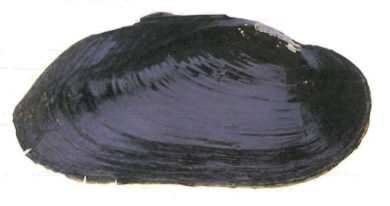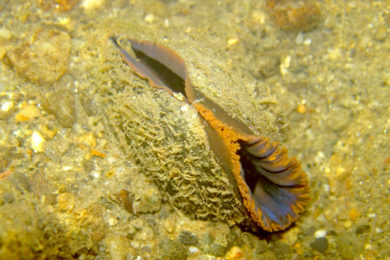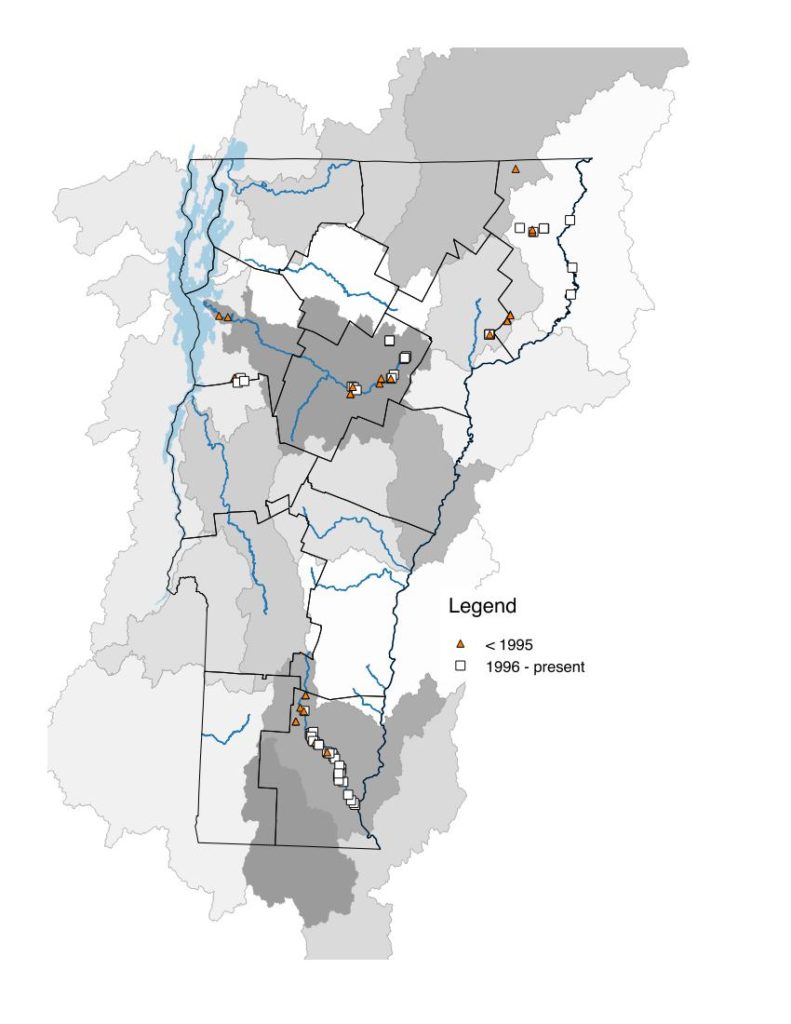 The Eastern Pearlshell is the only freshwater mussel in the family Margaritiferidae found in Vermont. Individuals can live to well over a century.
The Eastern Pearlshell is the only freshwater mussel in the family Margaritiferidae found in Vermont. Individuals can live to well over a century.
Key Characteristics
- Size: Up to six inches.
- Shape: Elongate. Older individuals (>120 mm long) often have a pronounced ventral curvature that gives them a slight “banana-shaped” appearance.
-

Eastern Pearlshell (Margaritifera margaritifera) iNaturalist Vermont observation (http://www.inaturalist.org/observations/404474). Photo by Larry Clarfeld
Periostracum: Thick. Dark. Shell rays absent. Color light brown (juveniles) to black (adults).
- Lateral Teeth: Absent.
- Pseudocardinal Teeth: Present and well developed—two on the left valve and one on the right valve.
- Nacre: Usually white, with faints pits centrally located, each with a faint “tail” or streak that points toward the beak cavity.
- There is no fusion in the mantle separating the inhalant and exhalant apertures.
- Similar Species: Eastern Elliptio
Conservation Status
- State and Global Rank: S2 G4
- Vermont Wildlife Action Plan: Species of Greatest Conservation Need
- Vermont Endangered Species Law: Threatened
- U.S. Endangered Species Act: not listed
- IUCN Red List: Endangered
Habitat
Found in cold streams that support trout populations with firm sandy bottoms, often among gravel, cobble or small boulders. Sometimes found tucked among tightly packed cobble and gravel. Clean gravel and sand (no siltation) is essential, particularly for juveniles.
Host Species
Salmonids, including Atlantic Salmon, Rainbow, Brook and Brown trout.
More information
- Encyclopedia of Life
- NatureServe
- Musselp
- New Hampshire species page and map
- iNaturalist species page
Range
Found in the Upper Winooski River and Lewis Creek watershed in the Lake Champlain basin as well as the Passumpsic, West, and Nulhegan rivers in the Connecticut River basin. Not found in lakes or ponds.
 Distribution map has locations where this species has been documented and digitized into the atlas database. Systematic surveys have not been conducted for many species and those surveys that have been conducted have been largely focused on endangered species. Therefore, in some cases, the actual distribution of freshwater mussels may be more extensive than what is presented here. Shaded areas are watershed sub-basins and river main stems are shown.
Distribution map has locations where this species has been documented and digitized into the atlas database. Systematic surveys have not been conducted for many species and those surveys that have been conducted have been largely focused on endangered species. Therefore, in some cases, the actual distribution of freshwater mussels may be more extensive than what is presented here. Shaded areas are watershed sub-basins and river main stems are shown.






